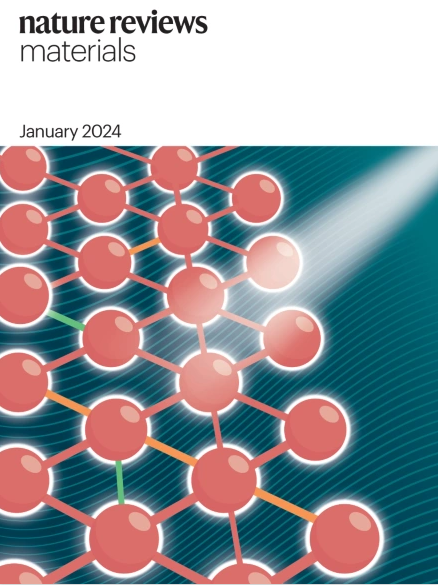数字医疗中软生物电子学的材料设计和集成策略
IF 86.2
1区 材料科学
Q1 MATERIALS SCIENCE, MULTIDISCIPLINARY
引用次数: 0
摘要
生物电子学的进步正在彻底改变传统医疗保健,将重点从医院疾病诊断和治疗转移到家庭连续预防护理。这种转变整合了实时健康监测和护理点介入治疗,并实现了基于人工智能的健康管理策略。然而,刚性生物电子器件和柔软生物组织之间的机械不匹配提出了重要的挑战,特别是在长期应用中,包括粘附性差、组织变性、高噪声水平、信号干扰和器件不稳定。为了应对这些挑战,利用高性能、组织模拟和机械柔软材料的软生物电子学已经成为一种颠覆性的解决方案。本综述重点介绍了软生物电子学在材料设计和系统级集成策略方面的进展,推动了下一代数字医疗技术的发展。我们对材料设计方法进行了分类,介绍了软生物电子学的制造技术,并探索了集成方法。此外,我们还展示了可穿戴和可植入软生物电子学的应用,展示了它们在持续健康监测和治疗干预方面的潜力,最终实现了闭环健康管理。本文章由计算机程序翻译,如有差异,请以英文原文为准。


Materials design and integration strategies for soft bioelectronics in digital healthcare
Advancements in bioelectronics are revolutionizing traditional healthcare by shifting the focus from in-hospital disease diagnosis and treatment to at-home continuous preventive care. This transformation integrates real-time health monitoring and point-of-care interventional therapies and enables artificial intelligence-based health management strategies. However, the mechanical mismatch between rigid bioelectronic devices and soft biological tissues presents important challenges, particularly in long-term applications, including poor adhesion, tissue degeneration, high noise level, signal interference and device instability. To address these challenges, soft bioelectronics — leveraging high-performance, tissue-mimicking and mechanically soft materials — has emerged as a disruptive solution. This Review highlights advancements in materials design and system-level integration strategies for soft bioelectronics, driving the development of next-generation digital healthcare technologies. We categorize materials design approaches, introduce fabrication techniques for soft bioelectronics and explore integration methods. Furthermore, we showcase applications of wearable and implantable soft bioelectronics, demonstrating their potential for continuous health monitoring and therapeutic interventions, ultimately enabling closed-loop health management. Rigid wearable and implantable bioelectronic devices present mechanical mismatches with soft biological tissues that limit their applicability. This Review systematically outlines materials and integration strategies for soft bioelectronic devices that overcome this mismatch and have the potential to enable continuous health monitoring, therapeutic interventions and closed-loop healthcare.
求助全文
通过发布文献求助,成功后即可免费获取论文全文。
去求助
来源期刊

Nature Reviews Materials
Materials Science-Biomaterials
CiteScore
119.40
自引率
0.40%
发文量
107
期刊介绍:
Nature Reviews Materials is an online-only journal that is published weekly. It covers a wide range of scientific disciplines within materials science. The journal includes Reviews, Perspectives, and Comments.
Nature Reviews Materials focuses on various aspects of materials science, including the making, measuring, modelling, and manufacturing of materials. It examines the entire process of materials science, from laboratory discovery to the development of functional devices.
 求助内容:
求助内容: 应助结果提醒方式:
应助结果提醒方式:


